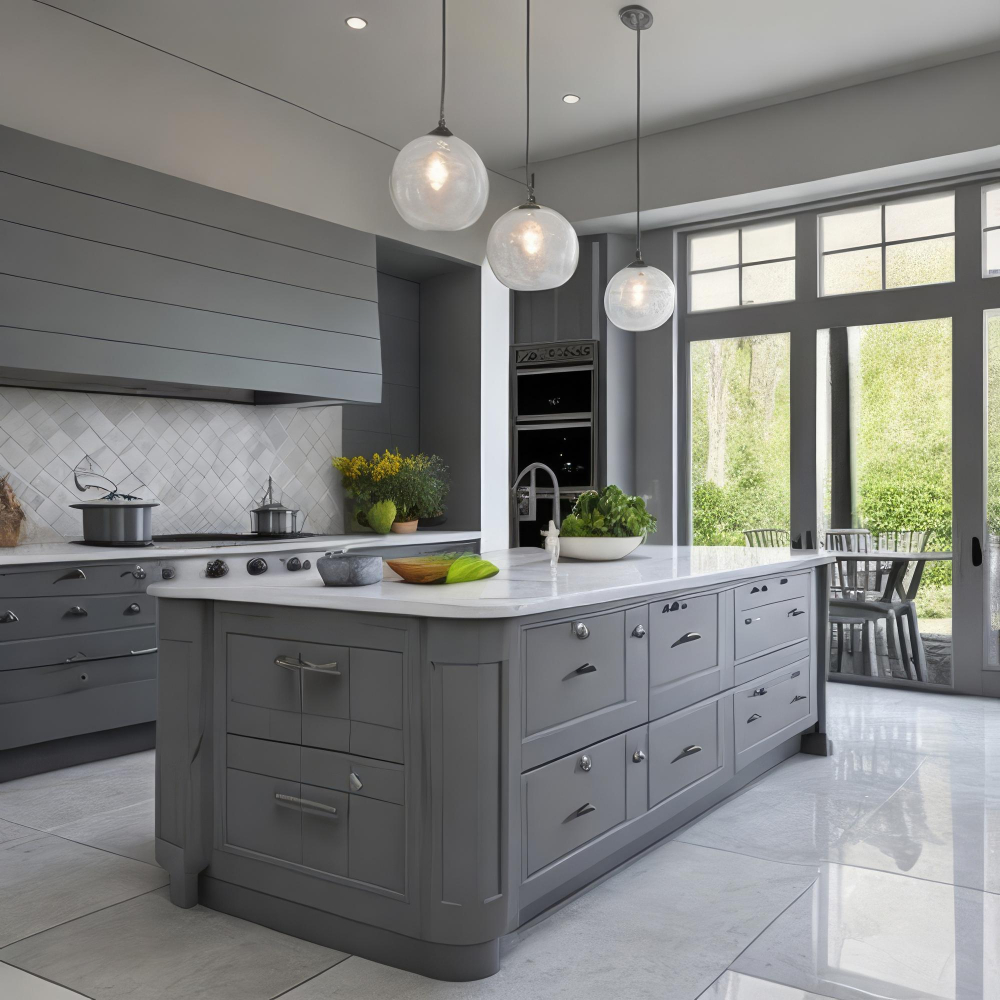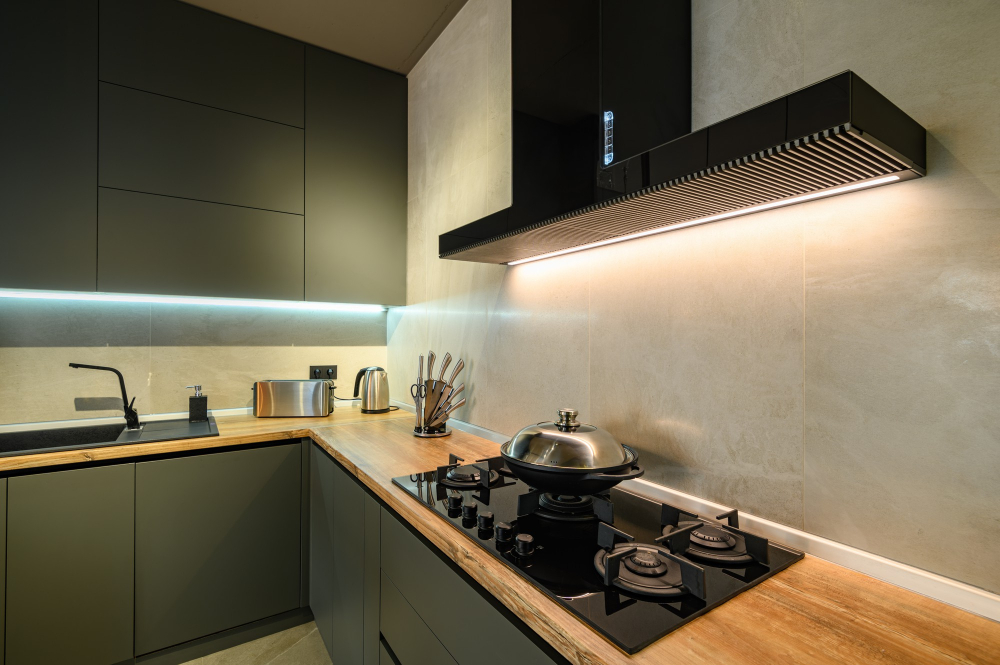Last updated on
Discover the key differences between warm white and cool white lighting. Determine which best suits your kitchen’s needs and enhances its ambiance.
When it comes to designing your kitchen, lighting is an essential element that can make or break the overall look and feel of the space. One of the most important decisions you’ll have to make is choosing between warm white and cool white lighting.
While both options have their advantages, they create vastly different moods in a room. In this article, we’ll explore the differences between warm white and cool white lighting, their pros and cons, and how to choose which one is best for your kitchen.
So let’s dive in!
Key takeaways:
- Warm white creates an inviting and cozy atmosphere.
- Cool white provides bright illumination for task-oriented areas.
- Warm white enhances natural wood tones and reduces eye strain.
- Cool white offers brightness, energy efficiency, and a modern look.
- Mixing warm white and cool white lighting adds depth to the space.
What's Inside
Warm White Vs Cool White: Overview

When it comes to lighting, color temperature is an essential factor that can significantly impact the ambiance of a room. Warm white and cool white are two common types of lighting that differ in their color temperature and create different moods in a space.
Warm white has a yellowish hue similar to incandescent bulbs, while cool white has a bluish-white tint like daylight or fluorescent lights.
In general, warm light creates an inviting and cozy atmosphere perfect for relaxing spaces such as living rooms or bedrooms. On the other hand, cool light provides bright illumination ideal for task-oriented areas such as kitchens or workspaces.
Choosing between warm white vs. Cool white lighting depends on your personal preference and the intended use of your kitchen space.
Understanding Color Temperature

Color temperature refers to the hue of light that a bulb emits, measured in Kelvin (K). The lower the number on the Kelvin scale, such as 2700K-3000K range for warm white bulbs, indicates warmer or yellowish light.
On the other hand, higher numbers like 4000k-5000k for cool whites indicate cooler or bluish-white hues.
The color temperature you choose can significantly impact your kitchen’s ambiance and functionality. Warm whites create a cozy atmosphere perfect for relaxing with family while cooking dinner together; they also make food appear more appetizing by enhancing its natural colors.
Cool whites are ideal if you need bright illumination when preparing meals or working at your kitchen island.
Pros of Warm White Lighting

Here are some of the pros of using warm white lighting in your kitchen:
- Creates a warm and inviting atmosphere: Warm white light has yellow undertones that create an intimate ambiance, making it perfect for entertaining guests or enjoying family meals.
- Enhances natural wood tones: If you have natural wood cabinets or flooring in your kitchen, warm white lighting can enhance their beauty by bringing out their rich tones.
- Reduces eye strain: Unlike cool white light which can cause eye strain over time, warm-white light is easier on the eyes and provides better visual comfort when performing tasks such as cooking or reading recipes.
- Complements earthy color schemes: If you have earthy colors like beige, brown, green or orange in your kitchen decor scheme then choosing warmer lights will complement these colors perfectly creating an overall cohesive look to space.
Cons of Warm White Lighting

One of the main cons is that it may not provide enough brightness for certain tasks such as cooking or food preparation. Warm white light tends to have a lower color temperature, which means that it emits less blue light and more yellow/orange light.
This can make it difficult to see details clearly, especially when working with sharp knives or reading recipes.
Another potential downside of warm white lighting is that it may clash with certain colors in your kitchen’s decor scheme. If you have cool-toned cabinets or countertops, for example, warm white lighting could make them appear duller than they actually are.
Despite these drawbacks, many homeowners still prefer warm white lighting because of its relaxing ambiance and ability to create an intimate setting during meal times or gatherings with friends and family.
Pros of Cool White Lighting

Here are some of the pros of using cool white lighting in your kitchen:
- Brightness: Cool white light has a higher color temperature than warm light, which means it appears brighter and more intense. This makes it ideal for task areas such as countertops or workspaces where you need clear visibility.
- Energy Efficiency: Cool white LED bulbs use less energy than traditional incandescent bulbs while providing the same level of brightness.
- Modern Look: If you’re going for a modern look in your kitchen, cool white lighting can help achieve that aesthetic with its crisp and clean appearance.
- Color Accuracy: Cool-white lights have better color rendering capabilities compared to warm-white lights making them perfect if you want colors to appear more vibrant and true-to-life.
Cons of Cool White Lighting

One of the main cons of cool white lighting is that it can create a harsh and clinical atmosphere in your kitchen. This type of light tends to be very bright and stark, which can make your space feel cold and uninviting.
Another disadvantage is that cool white lighting may not be suitable for certain areas in your kitchen where warm tones are more appropriate. For example, if you have wooden cabinets or countertops with warm undertones, cool white light may clash with them and create an unpleasant contrast.
Studies have shown that exposure to blue-rich light (which is present in cooler temperatures) at night can disrupt our circadian rhythm by suppressing melatonin production – the hormone responsible for regulating sleep-wake cycles. Therefore using too much cool-white lights during evening hours might affect our sleeping patterns negatively.
While there are ways to mitigate these issues such as dimming controls or mixing different color temperature bulbs together; considering these drawbacks will help you make an informed decision when choosing between warm vs.
Kitchen Task Areas & Light Types

For example, under-cabinet lighting is ideal for illuminating countertops where food preparation takes place. Pendant lights over an island or dining table can create a cozy atmosphere while providing enough light for eating and socializing.
For task areas such as cooking surfaces or sinks, bright cool white lighting is recommended as it provides better visibility and helps you see what you’re doing more clearly. Warm white lighting may be suitable for ambient or accent purposes in these areas but should not be relied upon solely.
It’s also worth noting that dimmer switches are a great addition to any kitchen as they allow you to adjust the brightness of your lights according to your needs at any given time of day.
Mixing Light Temperatures in Kitchens

However, it’s important to do so thoughtfully and with intention. When done correctly, mixing warm white and cool white lighting can add depth to the space by highlighting different areas of the room.
For example, you might use warm white lighting over your dining table or seating area for a cozy feel while using cool white lighting under cabinets or in task areas for better visibility when cooking. This contrast creates visual interest while also serving practical purposes.
When mixing light temperatures, be sure to consider how they will interact with each other as well as any natural light sources in the room. You don’t want one type of lighting overpowering another or creating an unbalanced look.
Mixing warm white and cool white lighting is a great way to enhance your kitchen’s ambiance but should be done carefully with consideration given to both aesthetics and functionality.





